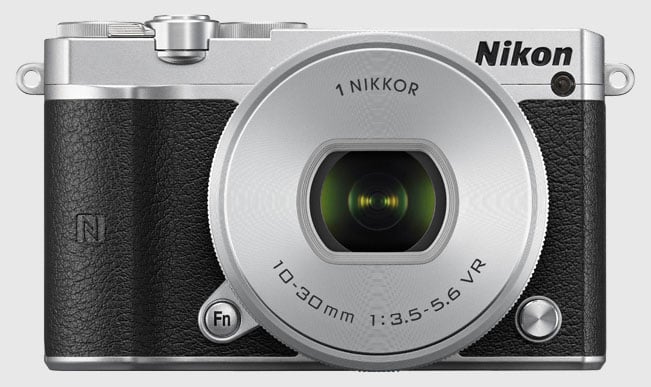![]()
Digital cameras are great — the technology they are built upon is remarkable, underpinned by remarkably sophisticated designs. Not only that, but the pictures they acquire are of such astonishing quality that they make anything that went before pale in comparison. So why then do digital cameras have such (relatively) short lifespans compared to film cameras?
The Value of Used Cameras
Leica’s have never been cheap, but if you bought a new M3 back in 1964, it would have cost you a relatively svelte $297 (about $2,500 today). That is fairly similar to the Nikon F which cost $330, although that came with a 50mm lens. Today a second-hand M3 in reasonable condition will set you back somewhere in the region of $1,600.
Okay, you’re not going to make a fortune selling antique M3s — unless of course you happen to have your grandfather’s M3 prototype sitting at the back of the closet worth a rather eye-watering $400,000 — but that original ticket price hasn’t actually gone down that much.
We are all familiar with this trend in the auto trade; for example, the Mercedes-Benz S-Class takes the top spot for the fastest-depreciating car in the UK, losing some 65.8% of its value in the first three years, equivalent to $123,000! So how do cameras compare?
My first serious camera was the Nikon D700 which appeared on the scene in 2008, costing $3,000 (about $3,600 today). If you were to buy a secondhand one today, it’d set you back ~$450 or about 87.5% depreciation. Of course, depreciation is a result of perceived worth in the secondhand market and the Nikon D700 wasn’t just a great performer, but was also built like a tank and is supported by a vast array of high-quality F-mount lenses.
In comparison, the Pentax K20D had a list price of $629 (about $750 today) but you are unlikely to find it at a reputable secondhand retailer; on eBay, you’re likely to pay about $130 and that’ll probably include a lens. The depreciation is about the same as the D700 but you now enter the ~$100 and below camera segment where models are one-step from worthless.
Suddenly that Leica M3 looks like a pretty good value.

The Strange Workings of the Used Camera Market
So what’s going on here? New products — at least those manufactured in volume — are priced to make a small markup on the manufacturing cost (which includes things like sales and marketing), as well as recoup any research and development. You want to price your product to encourage consumers to purchase it, while also competing with other manufacturers in an open market.
Hopefully, your new product has a value proposition to consumers that makes them want to buy: the Nikon Z9 is the first pro-spec full frame mirrorless camera to market which makes it “worth” more. In this instance, Nikon has priced it very competitively to increase demand and push the popularity of the Z-system. As time goes by, that value proposition is diminished as new products arrive, R&D costs are recouped and manufacturing costs approach optimal, all of which means the price should drop.
Of course, as soon as a product is “secondhand” it is immediately worth less than a new item, even if it is unused and originally packaged. We see a small space — with a price premium — for refurbished, “as-new”, and ex-display models, but, by and large, as soon as it’s sold it drops in value which, as we have seen with cars, can be quite dramatic. At what point an item becomes collectible or an antique is debatable, but scarcity is clearly a factor at play hence the price tag for that Leica M3 prototype.
In contrast, I doubt a CD of Robbie Williams’s Escapology will fetch a high price anytime soon judging by the number of them available in secondhand stores.
However, there is also another factor at play here… you can still drive a 1964 Ford Mustang and shoot photos with a Leica M3, which means, barring any hardware failures requiring you to source spare parts, you just need gasoline or 35mm film to get them working. The same isn’t necessarily true of a Betamax video player or a Sony Mavica FD75: for the former, you’d need a Betamax tape and for the latter a floppy disk.

The simple fact is that many technology devices become obsolete because they are unusable.
Digital Cameras Quickly Become Obsolete
So why will digital cameras become obsolete far faster than film cameras have? The first reason is hinted at above: media is a real problem for any digital device as storage formats have evolved over time. Floppy disks, CDs, and Memory Sticks will be increasingly more difficult to obtain as time goes on; at what point will these devices not be able to record images? And even if you can record them, can you actually transfer them to your computer?
The fact remains that digital cameras — and particularly those through to the early 2000s — will most likely be useless in 50 to 100 years’ time (if not way sooner), at which point you may well still be able to shoot with your Leica M3 film camera!
This is a stark reminder of the second problem: the image quality of early digital cameras was very poor and it has taken a long time for digital to approach the fidelity of film in terms of dynamic range and resolution. Any camera older than 2012 (the point at which DSLRs significantly improved) will have significant limitations, but even much newer mirrorless models may already be defunct.
Thirdly, another key camera component is the battery; while there are still companies, both big and small, producing camera film in a wide range of formats, will the same be true of critical camera batteries decades from now? In 50 years, will you be able to get that EN-EL3e for your Nikon D700? Most cameras are battery-only devices, meaning that they will lie dormant until you can figure out how to power them up.

Fourth, modern cameras are more similar to computers (which quickly become obsolete) than the purely mechanical cameras of old (which can often live on indefinitely with proper maintenance and repair). The high-tech electronic components in cameras can fail over time, turning digital cameras into paperweights unless an expensive repair is done to replace failed components.
The final element relates to software and is perhaps less of a problem. Digital cameras have increasingly sophisticated firmware onboard that generally remains proprietary and closed; this isn’t essential, but it would be a social good if manufacturers released firmware to the photographic community, rather than risking their loss. Related to this is the use of proprietary raw image formats and while Adobe has been good at supporting the latest cameras, who knows if legacy formats will remain usable.
Will any computer or software still be able to read lesser-used raw formats in future generations? The LibRaw project does offer long-term support and this may well alleviate problems going forward.
How Long Should a Digital Camera Last?
The obvious question is how long should a digital camera last? The points above have suggested some reasons why we may not be able to use digital cameras in the future, but they miss one further point. While a camera might well work exactly as it did the day you bought it, it may no longer serve the need you have. This isn’t about the camera, but rather how you intend to use it, which says more about you and the wider photographic community. And, of course, Gear Acquisition Syndrome!
A great example is something like the Nikon 1 J5: a great camera for many users, but with the 1-System discontinued and a limited lens lineup, it meets the criteria for obsolescence even if it is perfectly usable. And the J5 was only announced in 2015.

What are your longest and shortest-lived cameras? Do you consider longevity when you purchase a new camera and are we finally entering an era of longer-lived models? Or are product lifecycles mirroring that of smartphones and becoming shorter and shorter? I, for one, am thankful that the desperately poor image quality of early cameras is long gone and that digital is now arguably better than film.
What I really want to see is the next revolution: what is the next major step forward that isn’t the smartphone?
Image credits: Leica M3 in header illustration by Andrew Basterfield and licensed under CC BY-SA 2.0, stick figure illustration from Depositphotos.
Author: Mike Smith
Source: Petapixel



